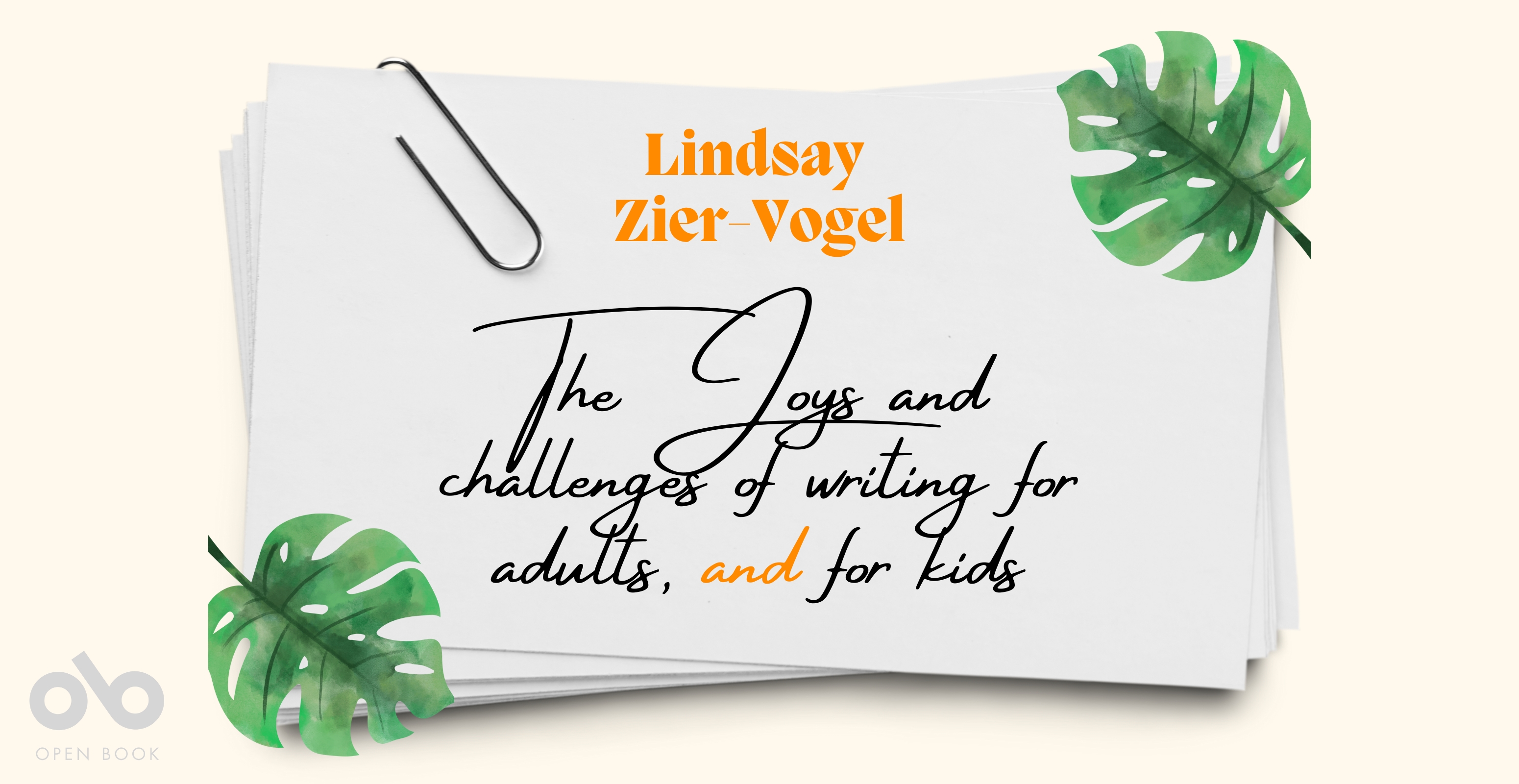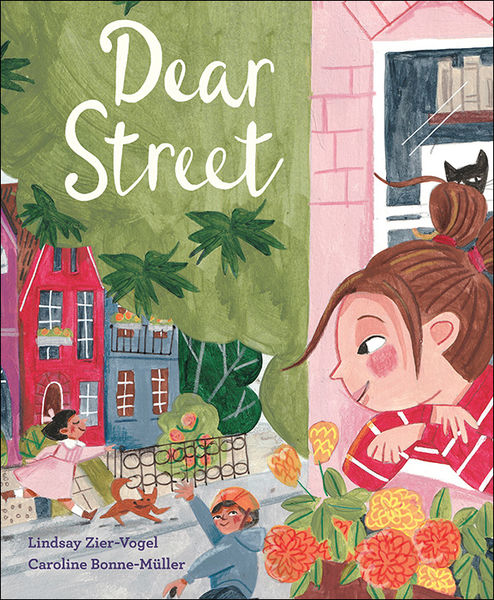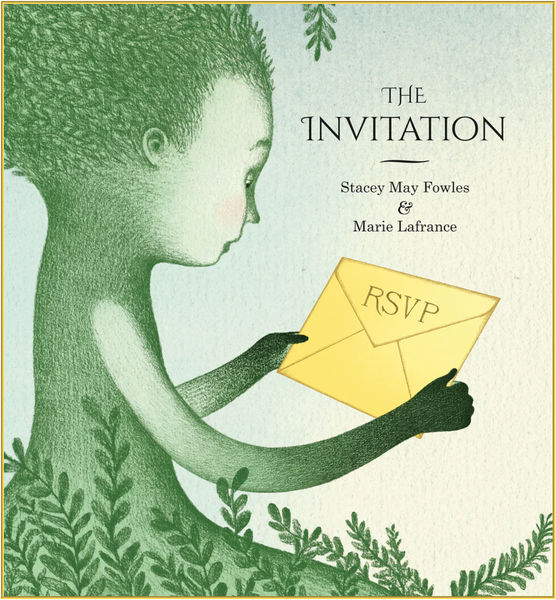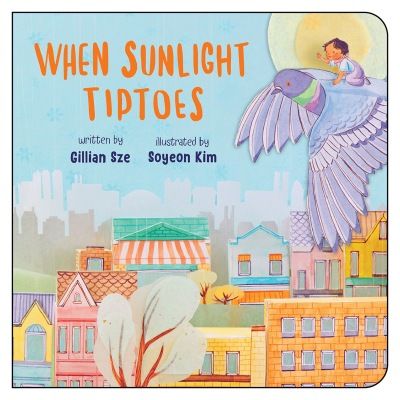The Joys and Challenges of Writing for Adults AND for Kids
By Lindsay Zier-Vogel
I’ve had May 2 circled on my calendar for months and months—it marks the pub date of my debut picture book, Dear Street. As the launch approaches, I’ve been thinking about how different the processes of writing and publishing adult and kids’ books have been.
Where Letters to Amelia took years (and years!) to write a first cohesive draft, I wrote the initial manuscript for Dear Street on a December afternoon while my youngest child napped. Of course, it took many (MANY!) revisions and rewrites, but it was such a revelation to be able to sit down and conceive of the whole story in one pass.
With under 30 pages in a kids’ book, and, well, unlimited (ish) pages in an adult novel, the scope is, well, different to say the least. Where Letters to Amelia clocks in at 71,000 words, Dear Street is 479 words—not even 500 words! It was fascinating to explore with my editor how precise the language needed to be. It also took me a while to realize how I could lean on the illustrations to help tell the story—something that doesn’t really exist in a traditional fiction novel.
As Dear Street enters the world, I’ve been reflecting on the processes of writing for these two very different audiences, and reached out to fellow authors who also write for adults and kids. Stacey May Fowles’ debut picture book, The Invitation, is just out; Jael Richardson published Because You Are in 2022 and her newest children’s title The Hockey Jersey was released January 2023 as part of Scotiabank’s Hockey For All initiative; and Gillian Sze has a long list of picture books including her most recent, When Sunlight Tiptoes.
How is your process different when writing for children and for adults?
Stacey May:
This is my first picture book, and I learned pretty early on that writing for children is a totally different process, creative and otherwise. There was sort of a wonderful humbling that happened—it kind of felt like starting over again from both a writing and publishing perspective, which was far more fun than it sounds. I wasn’t mired in old processes, and let myself think in new ways. There’s something wonderful about that fresh beginner feeling no matter what and how long you’ve been writing—where ideas feel fun and full of possibility, where you can ask questions and experiment.
Jael:
When I write for adults, I often have a sense of the project for a long time before I event start writing it. I work on it for a much longer time too. Adult writing can become kind of all-consuming in that everything I do gets brought back to this theme or question that I’m grappling with. All of my kid lit, has come to me rather unexpectedly. In all three cases, someone has come to me and asked me to write something. So the work, in some ways, has been very reactionary. It has been helpful to have something smaller and shorter pull me away from the longer work. My children’s writing has also always come when I was in the midst of a larger book, so it feels like a break or a relief in many ways.
Gillian:
I’ve been writing for adults for much longer, so I feel like my process there is more solitary, independent, and confident. Picture book writing is still new to me—which is thrilling—but I’ve noticed that it is more collaborative. Before the words find themselves in an actual book, the text passes through so many people first: my children (who are quick to share their reactions), my trusted agent, Hilary (who will go through multiple versions), and then the editors (those who reject it and generously provide feedback, and then the one who finally accepts it and provides even more feedback).
Are the challenges of writing kids’ books and adult books different?
Jael:
They are both very challenging for me. I think a lot about how a line reads on the page and out loud, and so I end up spending – in both cases – a lot of time changing my mind or fine tuning a sentence or two to death. The thing that’s exciting about writing for children, is that you can read through a draft so quickly. You can really fine tune every angle. Ultimately, the quickness of it provides a kind of satisfaction longer, adult prose cannot. With my adult writing, it feels like I’ll never finish, and I often consider just signing off on something before it might be ready because I’m exhausted by the effort.
Gillian:
Writing picture books means that I have to be particularly attentive to language that is fitting and accessible for children. When writing The Night Is Deep and Wide, for example, I had to think of familiar sights, sounds, and experiences to which the littlest readers could connect. Board books are aimed for listeners newborn to 3 years old, so I’m writing for babies who’ve had a very short time on this planet so far! I really enjoyed writing When Sunlight Tiptoes because of its onomatopoeia and rhythm. I hope that young listeners grasp onto the music before the sense.
Your CanLit News
Subscribe to Open Book’s newsletter to get local book events, literary content, writing tips, and more in your inbox
Stacey May:
When I’m working on a manuscript for adults I tend to think in wide, big picture, sweeping ways, but working on a picture book felt very much like the opposite—as if I was trying to get smaller and smaller, more precise and closer to the point, until the language and rhythm were exact as possible.
For me working on books for adults always seems to involve a lot of figuring things out on the page, whereas a story for children involves a lot of walking away and thinking—sometimes for months. I had to become okay with not feeling “productive” in a traditional sense, understanding that a huge part of the execution is in the conception, not in the word count.
What is the best part about writing for both kids and adults?
Jael:
The best part of both is the readers. For all of my books, even my longer prose, I try and create work that almost everyone can read or understand. For my novel and my memoir, which require a slightly older reader than my picture books, it’s been nice to hear different generations of family members gleaning different things from the text. And it’s the same with the picture books. When parents tell me that they cried reading one of my books to their kid or when they tell me that they fought over a book with their teen, well that’s just delightful. It’s the best kind of compliment.
What do you like about writing for kids that you don’t get with writing for adults?
Stacey May:
I feel like I think so much more about audience when writing picture books for children. There’s an inherent reality to the genre that gets you thinking so much more about language, message, and how both are artfully delivered, whereas when writing for adults, personal expression tends to get prioritized throughout the process. That doesn’t mean expression gets disposed of when creating for children, only that to be successful you’re working within specific age-related parameters, and that challenge can definitely be a fun and welcome one.
Also, when you’re working on a novel or essay collection, you don’t tend to open your inbox to exquisitely beautiful accompanying illustrations you never could have imagined in your wildest dreams, so that’s another bonus.
What do you like about writing for kids that you don’t get with writing for adults?
Gillian:
I have completely and absolutely fallen in love with the process of working with a children’s book illustrator and an art team. Don’t get me wrong—I have been very lucky to work with publishers who make gorgeous books, such as ECW and Gaspereau, and indeed holding those collections is its own tactile experience. But to work so closely with an artist who brings the entire manuscript into a world of imagery, colour, and unforeseen life—it’s a delight at every turn. I never would have envisaged my villanelle with Sue Todd’s linocuts, or my pantoum with Soyeon Kim’s dioramas, or anticipated the accompanying rich illustrations of Michelle Lee and Niña Mata. I feel very lucky to have had a chance to work with these talented artists.
More about the featured authors:
Stacey May Fowles is an award-winning journalist, essayist, critic, and the author of five books. Her bylines include the Globe and Mail, the National Post, Reader’s Digest, Elle Canada, Toronto Life, The Walrus, and many others.
Her national bestseller Baseball Life Advice was published in Spring 2017, and was selected by the Globe and Mail, the National Post, and Maisonneuve as a best book of the year. A former columnist at the Globe and Mail, she writes the Book Therapy column for Open Book Ontario. Her recent anthology, Good Mom on Paper: Writers on Creativity and Motherhood (co-edited with Jen Sookfong Lee) was released spring 2022. The Invitation is her first book for children.
Jael Richardson is the founder and Executive Director for the Festival of Literary Diversity (FOLD) in Brampton, Ontario. Her debut novel, Gutter Child won a Word Award and was a finalist for the Amazon First Novel Award and the White Pine Award. Her second picture book, Because You Are, was published in July 2022 and her newest children’s title The Hockey Jersey was released January 2023 as part of Scotiabank’s Hockey For All initiative. Richardson holds an MFA in Creative Writing from the University of Guelph and lives in Brampton, Ontario.
Gillian Sze is the author of multiple poetry collections and picture books. Her latest book for adults, Quiet Night Think, is a collection of poems and essays that explores the early shaping of a writer, the creative process, and motherhood. Her most recent picture book is When Sunlight Tiptoes (ill. Soyeon Kim). Look out for her next picture book, The Little Green Envelope (ill. Claudine Crangle), coming out this summer with Groundwood Books.
The views expressed by Open Book columnists are those held by the authors and do not necessarily reflect the views of Open Book.
Lindsay Zier-Vogel is an author, arts educator, grant writer, and the creator of the internationally acclaimed Love Lettering Project. After studying contemporary dance, she received her MA in Creative Writing from the University of Toronto. She is the author of the acclaimed debut novel Letters to Amelia and her work has been published widely in Canada and the UK. Dear Street is Lindsay’s first picture book, and is a 2023 Junior Library Guild pick, a 2023 Canadian Children’s Book Centre book of the year, and has been nominated for a Forest of Reading Blue Spruce Award. Since 2001, she has been teaching creative writing workshops in schools and communities, and as the creator of the Love Lettering Project, Lindsay has asked people all over the world to write love letters to their communities and hide them for strangers to find, spreading place-based love.








